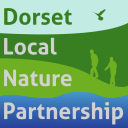
More, bigger, better and joined
When considered together, all sites and areas of wildlife value form a network, some parts of which will be closely interlinked, others less so, which has a value for the natural environment greater than the sum of its parts. This includes all known sites of wildlife importance, together with habitats that may be widespread but are nevertheless valuable for wildlife as part of the ecological function of the landscape, for dispersal (termed corridors and stepping stones) or to cushion wildlife sites from harm (termed buffers).
In 2010, an independent review of England’s wildlife sites and ecological networks, chaired by Professor Sir John Lawton, concluded unequivocally that England’s collection of wildlife areas does not represent a coherent and resilient ecological network capable of responding to the challenges of climate change and other pressures. The review made 24 recommendations, but summarised what needed to be done in just four words: more, bigger, better and joined. Government has adopted the suggested approach, and the concept of an ecological network is now embedded in the National Planning Policy Framework 2018 (NPPF), Natural Environment White Paper (2011) and Biodiversity 2020 (2011), the government’s strategy for wildlife and wildlife sites.
Dorset LNP and its partners (including Dorset Environmental Record Centre) have published a suite of maps setting out Dorset’s Ecological Networks, Potential Ecological Networks and a Guidance Document for using the maps. The maps are available as pdfs below and are set out in the local planning authority area. The data is also available on the Dorset Explorer (they can be found under Environmental Records in the Layer Control).
The Ecological Network Maps were first published in 2017. They have been updated in September 2020 with new data and to represent the council structures following the reorganisation in 2019.
Dorset’s Ecological Network Maps
- Dorset’s Ecological Network Guidance Document (Sept 2020)
Bournemouth, Christchurch, Poole Council Area
- BCP area: Existing Network Map
- BCP area: Existing & Higher Potential Network Map
- Bournemouth: Existing Network Map
- Bournemouth: Existing & Higher Potential Network Map
- Christchurch: Existing Network Map
- Christchurch: Existing & Higher Potential Network Map
- Poole: Existing Network Map
- Poole: Existing & Higher Potential Map
Dorset Council Area
- Dorset area: Existing Network Map
- Dorset area: Existing & Higher Potential Network Map
- Eastern Planning Area: Existing Network Map
- Eastern Planning Area: Existing & Higher Potential Map
- Northern Planning Area: Existing Network Map
- Northern Planning Area: Existing & Higher Potential Map
- Western & Southern Planning Area: Existing Network Map
- Western & Southern Planning Area: Existing & Higher Potential Map
- Dorchester: Existing &Higher Potential Map
Weymouth & Portland
- Weymouth & Portland Corridors and Stepping Stones Report (2010)
- Weymouth & Portland Corridors And Stepping Stones Report Addendum (2020)
- Weymouth & Portland: Ecological Network Map (Weymouth Map & Portland Map)
Working with the SW LNPs we have developed a guide to the Principles of Nature Recovery Networks across the South West.
More information
If you have any queries please contact: info@dorsetlnp.org.uk.
The refreshed Ecological Network maps were kindly supported by Dorset AONB’s 60th Anniversary Fund (supported by the National Lottery Heritage Fund).

